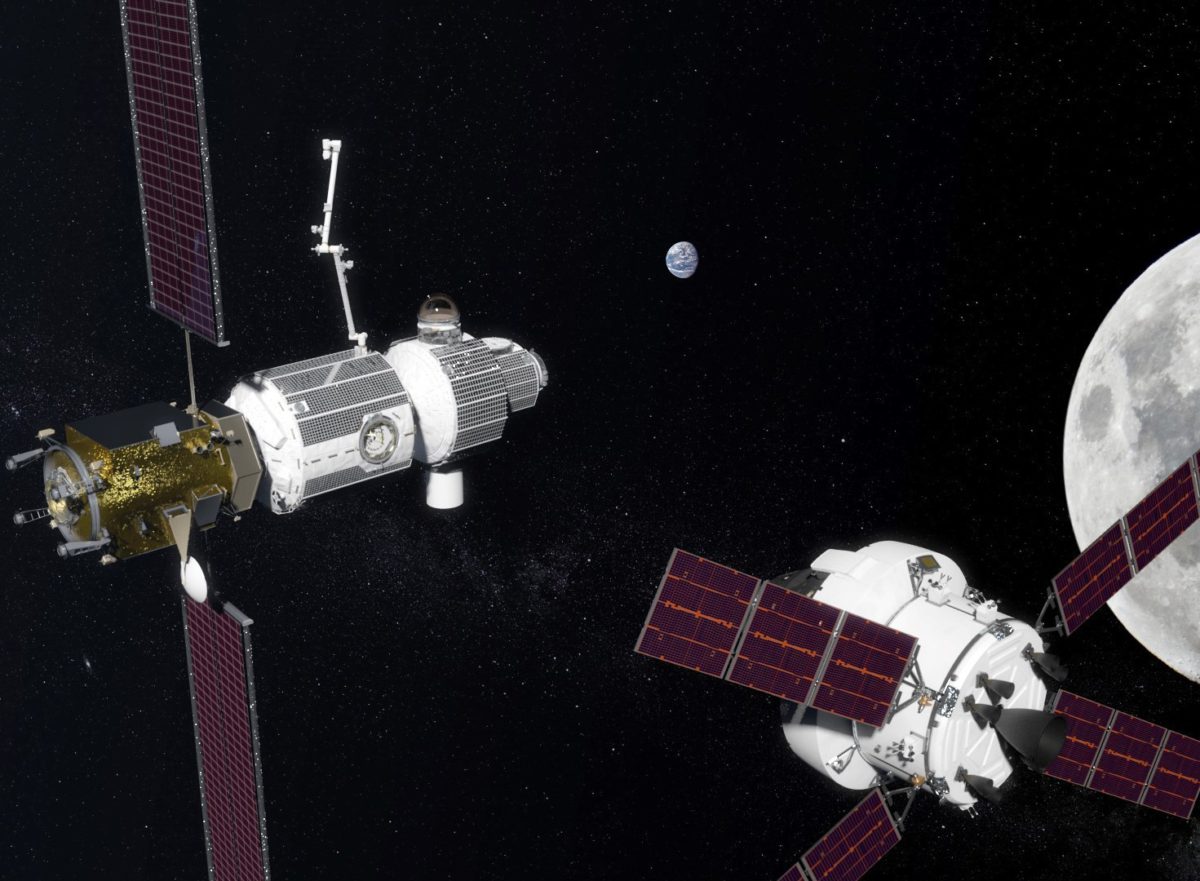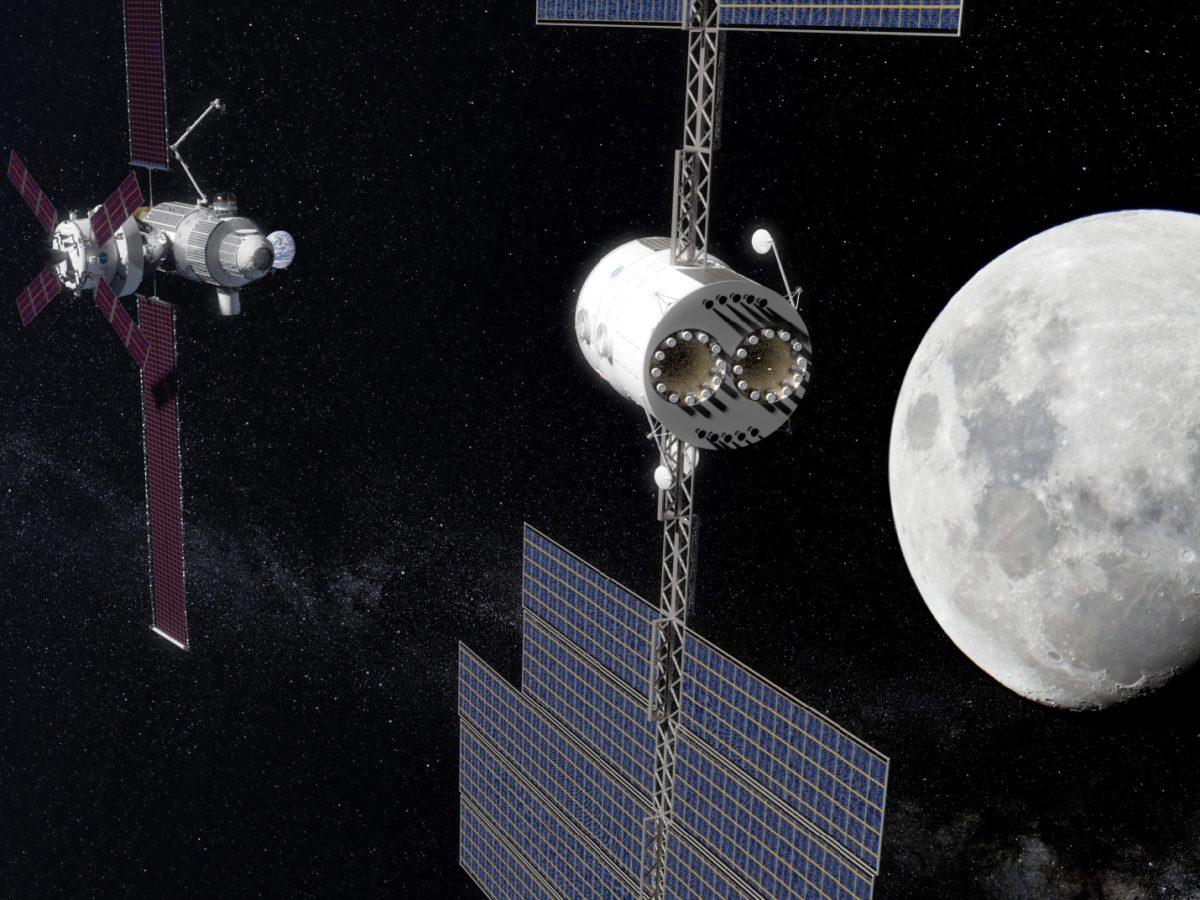Jason Davis • Apr 07, 2017
NASA unveiled new plans for getting humans to Mars, and hardly anyone noticed
Last week, NASA did something many have demanded it do since the Space Launch System was unveiled in 2011: Provide more details on how the agency will send humans to Mars.
During two presentations to the NASA Advisory Council, associate administrator Bill Gerstenmaier showed off the latest designs for a small, Moon-orbiting space station and a larger, reusable transport ship to carry astronauts to Mars and back.
It's NASA's most concrete plan yet for sending humans back into deep space. But beyond a smattering of articles, hardly anyone noticed.
That's probably okay with Gerstenmaier. Wary of being buffeted by political winds, NASA treads lightly these days—at least, publicly. Advisory Council meetings aren't really promoted, and the agency isn't exactly shouting the plan from the rooftops, beyond a single article that appeared on March 28.
Back in 2014, I described NASA's deep space exploration plans like this:
There is indeed a plan to put humans on Mars. Vague? Yes. Hard to see? Absolutely. But that's because Gerst and NASA are playing the long game. And right now, it may be the only game they can play.
Three years later, the game continues. While NASA works to keep its stakeholders happy and navigate potential changes ordered by the Trump administration, Bill Gerstenmaier and the agency's human exploration directorate are busy getting the Space Launch System and Orion ready for a test flight next year. That means it's time to get serious about the next steps.
"There's now a sense of urgency," Gerstenmaier said last week. "The hope is we've created enough of a framework that folks can see that there's a real plan worth executing. But also, it's not so defined that it if some piece changes, the entire plan gets thrown away and we start all over again."

Phase 1: The Deep Space Gateway
NASA's Obama-era "Journey to Mars" slogan has largely been replaced with a more generalized mandate to expand human presence into deep space, which includes Mars. The agency still plans to spend the 2020s learning how to live and work in lunar orbit, before starting trips to Mars in the 2030s. The most noticeable change seems to be a strong emphasis on making sure international and commercial partners have lots of opportunities to participate, and leverage NASA's cislunar presence for their own programs.
That cislunar presence is modestly named "Phase 1," the core of which is a small space station called the Deep Space Gateway, or DSG.
To say the DSG is a miniature International Space Station isn't quite accurate. It isn't meant to be continually staffed; with Orion docked, it only supports a crew of four for 42 days. The DSG has a propulsion module, habitation module, and possibly an airlock for spacewalks. It will likely have an updated version of the beloved Canadarm, and possibly an advanced glass cupola offering 360-degree views of the Moon and Earth.
The DSG would be assembled by 2025, over the course of three SLS flights—each of which will launch with a crewed Orion capsule. NASA would rely on commercial or international partners for resupply flights, and a final SLS mission to bring up the airlock is notionally scheduled for 2026.
An attractive destination
Building the DSG will allow NASA to practice pulling off complex deep space rendezvous, while learning to live and work where a quick return to Earth is not possible.
Another key component of the DSG is a 40-kilowatt solar-electric propulsion system. That's an order of magnitude more powerful than any SEP system operating today.
The SEP system allows the DSG to transition between an always-in-sunlight halo orbit to other orbits that could be useful for other applications, including lunar landings. That could make the new outpost an attractive destination.
"Anyone can come and use this vehicle," Gerstenmaier said. "Both the commercial side, and international partners."
Whether or not the DSG could transition all the way to low-lunar orbit remains to be seen, due to the large change in velocity required, as well as differing power and thermal requirements caused by transiting in and out of sunlight each orbit.
"Those requirements for low-lunar orbit may be so expensive they're not worth putting in this vehicle," said Gerstenmaier. "We'll trade what the science community wants, and what the other partners want, and determine whether we want to add that capability."

Phase 2: The Deep Space Transport
Once phase 1 is complete, NASA will move onto phase 2, during which the DSG becomes a lunar port of call for a large crew vehicle called the Deep Space Transport, or DST.
The DST supports a crew of four for 1,000 days at a time. Between each trip, it will be resupplied, refurbished and refueled at the DSG. NASA expects it to be long-lived enough for a total of three round trips to Mars.
The vehicle could be Skylab-esque in volume. International Space Station modules like Unity have a diameter of 4.3 meters. Skylab, essentially the size of a Saturn V rocket's upper stage, was 6.6 meters wide—wide enough to allow astronauts to float in the center without touching the walls. SLS has a fairing diameter of 8.4 meters, and NASA says the DST will take "full advantage of the large volumes and mass that can be launched by the SLS rocket."
The DST is heavy, too—NASA predicts a mass of 41 metric tons, without supplies. A single SLS cargo flight would carry it to lunar orbit in 2027.
"There's really no (other) vehicle today, or even planned, that can launch 41 metric tons (to the Moon) in one piece," Gerstenmaier said. "We think that that is the minimum size for this Mars-class transport."
The closest contender is SpaceX's upcoming Falcon Heavy launcher. The rocket is advertised as being able to heave 64 metric tons into low-Earth orbit, but there is no reliable public estimate on how much mass it can send to the Moon. (An article by Universe Today last year suggested 13 metric tons, which is the same capability SpaceX is projecting for Mars.)
All or nothing
NASA's all-in-one-launch approach for the Deep Space Transport actually resembles SpaceX's far-flung plan to send a million people to Mars.
That plan envisions launching 100 people into Earth orbit atop a behemoth rocket powered by 42 engines. SpaceX, having no on-orbit assembly experience, doesn't seem to be interested in smaller rockets and numerous launches. NASA, despite having almost 20 years of experience with the ISS, isn't favoring that approach either.
In NASA's case, Gerstenmaier said the single-launch approach saves weight, since assembling multiple components requires extra berthing ports and internal hatches. The agency also has the Space Launch System at its disposal, and likely wants to avoid the cost of a multi-mission assembly project.
After receiving supplies and equipment at the DSG, the DST would be ready to fly. In 2029, a crew would climb aboard for a one-year shakedown cruise, during which the DST would fly on its own in lunar orbit. Assuming everything goes smoothly, the DST would return to the DSG (still following the acronyms?) for refueling and supplies, before embarking on its first crewed flight to Mars orbit in 2033.
The journey might involve a Venus gravity assist, in which case the chosen crewmembers would get to see the clouds of Venus and volcanoes of Mars all in the same trip—with their own eyes.
Partners or competitors?
Shortly after President Trump signed the NASA Transition Authorization Act of 2017, SpaceX CEO Elon Musk let it be known on Twitter he wasn't happy:
@karaswisher I am not. This bill changes almost nothing about what NASA is doing. Existing programs stay in place and there is no added funding for Mars.
— Elon Musk (@elonmusk) March 22, 2017
@karaswisher Perhaps there will be some future bill that makes a difference for Mars, but this is not it.
— Elon Musk (@elonmusk) March 22, 2017
We can infer that by "existing programs," Musk meant SLS and Orion. Based on his conversations with Trump, he may have been hoping for a large-scale space policy shift in SpaceX's favor, away from traditional contractors like Boeing and Lockheed Martin.
Meanwhile, another SpaceX competitor, United Launch Alliance, spent this past week promoting its "Cislunar 1000" vision at the 33rd Space Symposium in Colorado Springs. The vision calls for a 1,000-person-strong, self-sustaining space economy on and around the Moon by 2045. Some burgeoning entrepreneurs and international space agencies are on board with the notion, and the idea has at least some political support—typically centered around alarm over China's lunar ambitions.
All of this would seem to put NASA at the center of a complicated tug-of-war between traditional and NewSpace firms, and the Moon and Mars.
If that's the case, Gerstenmaier's current approach could prove to be nothing short of genius. The DSG plants at least the seeds of a cislunar economy: it will rely on commercial and international resupply services, it offers a waypoint in deep space, and it opens up lunar surface opportunities.
In the meantime, SpaceX and NASA might end up making more strides toward Mars together. During last week's Advisory Council meeting, Gerstenmaier reiterated the agency's partnership with SpaceX on its Red Dragon project, which could yield critical advances in entry, descent and landing technologies. NASA also has years of experience operating rovers on the Martian surface, a small fleet of reconnaissance orbiters, and the Deep Space Network at its disposal.
Maybe the situation isn't as bad as Musk thinks.
"There's nothing this agency cannot do," Gerstenmaier said. "If you can give us a clear direction, and give us reasonable resources, this agency and its contractor base will accomplish what you want."
Let’s Go Beyond The Horizon
Every success in space exploration is the result of the community of space enthusiasts, like you, who believe it is important. You can help usher in the next great era of space exploration with your gift today.
Donate Today

 Explore Worlds
Explore Worlds Find Life
Find Life Defend Earth
Defend Earth

